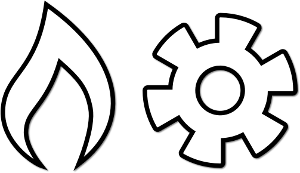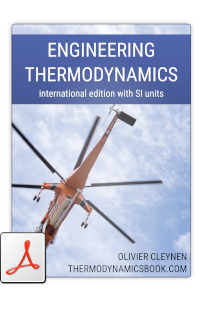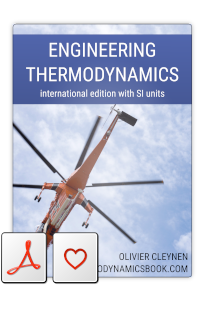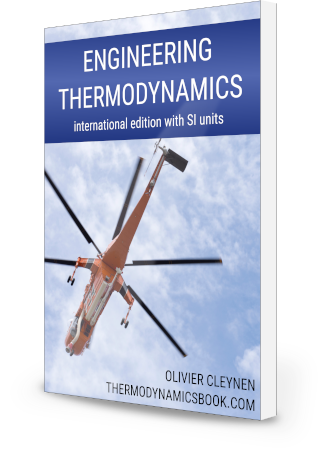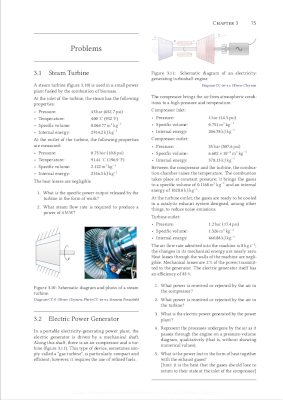
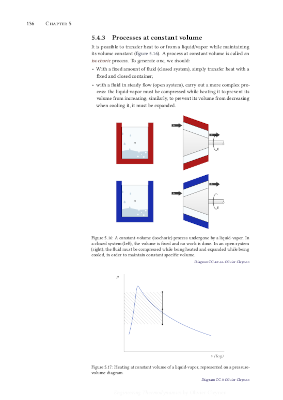
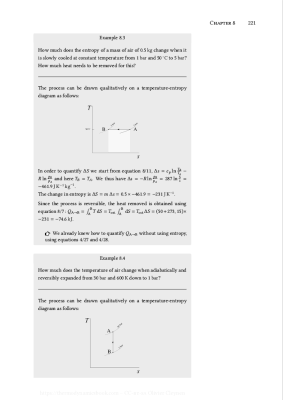
with extensive comments
This textbook offers a clear, progressive introduction to thermodynamics, tailored for university students and future engineers eager to understand the physical principles behind engines and refrigeration systems. It begins from the basics and progressively covers all the important concepts:
1 Fundamental Concepts
Review the essential concepts for the study of thermodynamics
Concept of energy; First law; Mech. energy; Work; Heat; Temperature.
2 Closed Systems
Quantify energy transfers in a fixed quantity of fluid
Quantification of work and heat in a closed system; Concept of irreversibility.
3 Open Systems
Quantify energy transfers in a continuously-flowing fluid
Usefulness of open and closed systems; Quantification of work and heat.
4 The Ideal Gas
Predict air temperature and quantify its forms of energy
Advantages and limits of the ideal gas model; Basic elementary processes.
5 Liquids and Vapors
Predict water temperature and quantify its forms of energy
Phase changes, property calculations using charts; Basic elementary processes.
6 Thermodynamic Cycles
Convert heat into work and vice versa: engines and refrigerators
Thermal machines: efficiency of engines, refrigerators, AC, and heat pumps.
7 The Second Law
Quantify the fundamental limits of thermal machines
Maximum efficiency of machines (Carnot cycle); Absolute temperature scale.
8 Entropy
Quantify irreversibility and predict the direction of processes
Irreversibilities in heat and work transfers; Usefulness of entropy for engineers.
9 Steam Power Cycles
Quantify the performance of steam-powered plants
Carnot and Rankine cycles, with superheating, reheat, and regeneration.
10 Air-Based Power Cycles
Quantify the performance of gasoline & Diesel engines, and turbomachines
Otto and Diesel cycles; Turbojet, turboprop, etc., and their modifications.
A Appendices
Useful working documents, including Steam Tables from freesteamtables.com.
Steam Tables; Converting to SI units; Bibliography; List of symbols; Index.
With 59 fully-commented, step-by-step calculation examples and 96 problems with solutions, this book equips readers to tackle engineering challenges with confidence. Alongside rigorous analysis, it weaves in historical insights and scientific context — connecting core ideas to their origins and their technological impact.
This book is translated from the third edition of the French-language Thermodynamique de l’ingénieur, which has been continuously improved for 10 years, and is used by teachers of the following institutions:
- Université de Technologie de Compiègne (UTC);
- Institut IMPMC de Sorbonne Université;
- Université Paris-Saclay;
- Université Laval;
- Université Paris-Est Créteil;
- École Nationale d’Ingénieurs de Tunis (ENIT);
- Universités de Ouargla, Bouira, Annaba, Chlef et Biskra;
- Haute École Louvain en Hainaut;
- Preparatory Classes of Lycée Blaise Pascal de Rouen;
- École des Hautes Études d’Ingénieur (HEI);
- École d’ingénieurs du Littoral-Côte d’Opale (EILCO);
- INSA Rouen Normandie.
For years that I have been studying thermodynamics, I have never really had intuition about what I was doing. This bothered me A LOT as I am the kind of student who feels comfortable understanding at least what I do and why I do it. This is until I came across your book “Thermodynamique de l’ingenieur”. The amount of happiness I feel after a lot of things are just clicking finally made me look for your address anywhere, so I can say thank you for that.(and other compliments received about the French original that make the author beam with joy)
